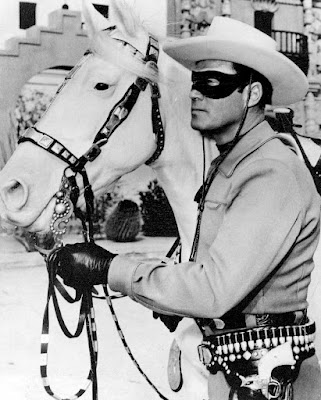On This Date In History
On January 30, 1933, with the stirring notes of the William Tell Overture and a shout of “Hi-yo, Silver! Away!” The Lone Ranger debuts on Detroit’s WXYZ radio station.
The creation of station-owner George Trendle and writer Fran Striker, the “masked rider of the plains” became one of the most popular and enduring western heroes of the 20th century. Joined by his trusty steed, Silver, and loyal Native American scout, Tonto, the Lone Ranger sallied forth to do battle with western outlaws and Native Americans, generally arriving on the scene just in time to save an innocent golden-haired child or sun-bonneted farm wife.
Neither Trendle nor Striker had any connections to or experience with the cowboys, Indians, and pioneers of the real West, but that mattered little to them. The men simply wanted to create an American version of the masked swashbuckler made popular by the silent movie actor Douglas Fairbanks in The Mark of Zorro, arming their hero with a revolver rather than a sword. Historical authenticity was far less important to the men than fidelity to the strict code of conduct they established for their character. The Lone Ranger never smoked, swore, or drank alcohol; he used grammatically correct speech free of slang; and, most important, he never shot to kill. More offensive to modern historical and ethnic sensibilities was the Indian scout Tonto, who spoke in a comical Native American patois totally unrelated to any authentic Indigenous dialect, uttering ludicrous phrases like “You betchum!”
Historical accuracy notwithstanding, the radio program was an instant hit. Children liked the steady stream of action and parents approved of the good moral example offered by the upstanding masked man. Soon picked up for nationwide broadcast over the Mutual Radio Network, over 20 million Americans were tuning into The Lone Ranger three times a week by 1939. In an early example of the power of marketing tie-ins, the producers also licensed the manufacture of a vast array of related products, including Lone Ranger guns, costumes, books, and a popular comic strip.
The Lone Ranger made a seemingly effortless transition from radio to motion pictures and television. The televised version of The Lone Ranger, staring Clayton Moore as the masked man, became ABC’s first big hit in the early 1950s. Remaining on the air until 1957, the program helped define the golden age of the TV Western and inspired dozens of imitators like The Range Rider, The Roy Rogers Show and The Adventures of Wild Bill Hickok.
The Lone Ranger 1949 - 1957 Opening and Closing Theme
https://www.youtube.com/watch?v=p9lf76xOA5k
On January 30, 1933, President Paul von Hindenburg names Adolf Hitler, leader or führer of the National Socialist German Workers Party (or Nazi Party), as chancellor of Germany.
The year 1932 had seen Hitler’s meteoric rise to prominence in Germany, spurred largely by the German people’s frustration with dismal economic conditions and the still-festering wounds inflicted by defeat in the Great War and the harsh peace terms of the Versailles treaty. A charismatic speaker, Hitler channeled popular discontent with the post-war Weimar government into support for his fledgling Nazi party. In an election held in July 1932, the Nazis won 230 governmental seats; together with the Communists, the next largest party, they made up over half of the Reichstag.
Hindenburg, intimidated by Hitler’s growing popularity and the thuggish nature of his cadre of supporters, the SA (or Brownshirts), initially refused to make him chancellor. Instead, he appointed General Kurt von Schleicher, who attempted to steal Hitler’s thunder by negotiating with a dissident Nazi faction led by Gregor Strasser. At the next round of elections in November, the Nazis lost ground, but the Communists gained it, a paradoxical effect of Schleicher’s efforts that made right-wing forces in Germany even more determined to get Hitler into power. In a series of complicated negotiations, ex-Chancellor Franz von Papen, backed by prominent German businessmen and the conservative German National People’s Party (DNVP), convinced Hindenburg to appoint Hitler as chancellor, with the understanding that von Papen as vice-chancellor and other non-Nazis in key government positions would contain and temper Hitler’s more brutal tendencies.
Hitler’s emergence as chancellor on January 30, 1933, marked a crucial turning point for Germany and, ultimately, for the world. His plan, embraced by much of the German population, was to do away with politics and make Germany a powerful, unified one-party state. He began immediately, ordering a rapid expansion of the state police, the Gestapo, and putting Hermann Goering in charge of a new security force, composed entirely of Nazis and dedicated to stamping out whatever opposition to his party might arise. From that moment on, Nazi Germany was off and running, and there was little Hindenburg or von Papen, or anyone, could do to stop it.









No comments:
Post a Comment